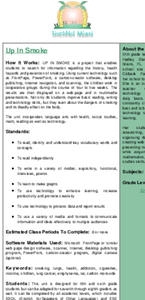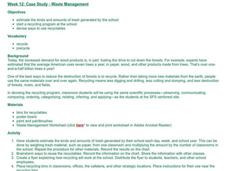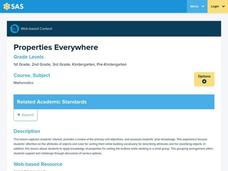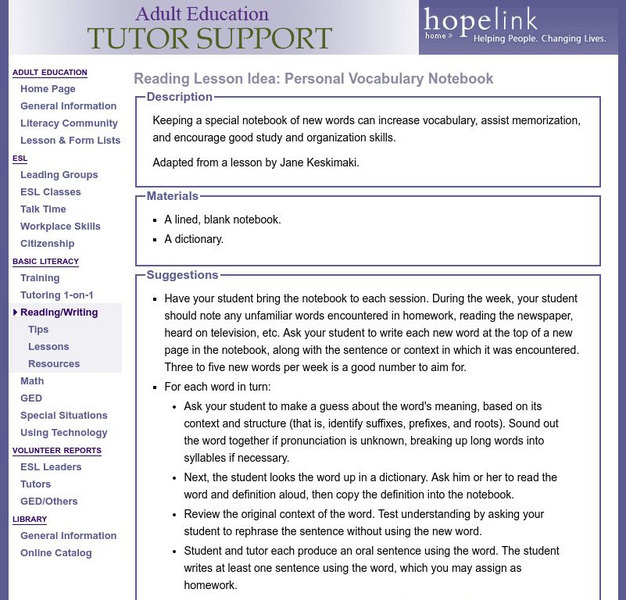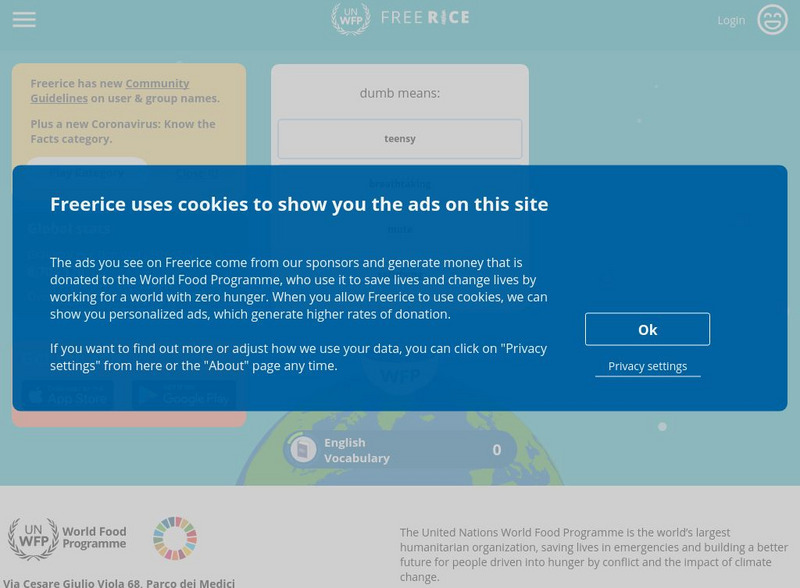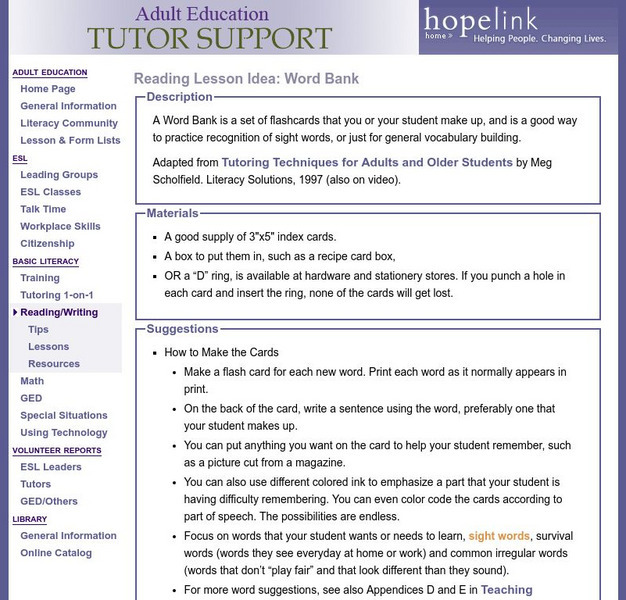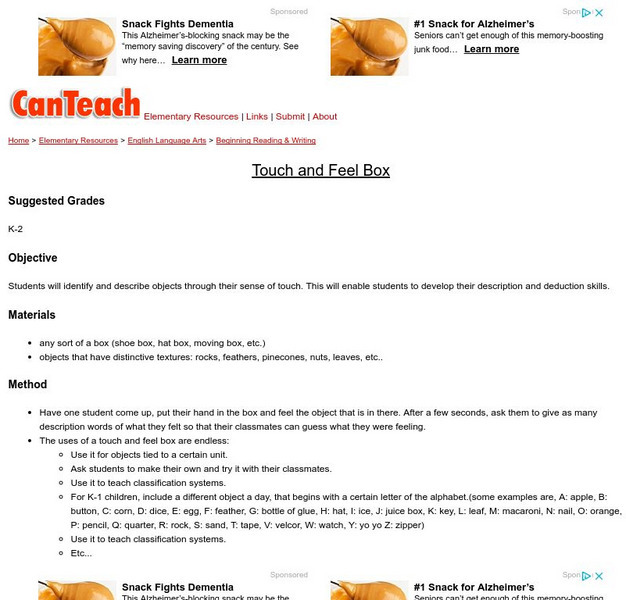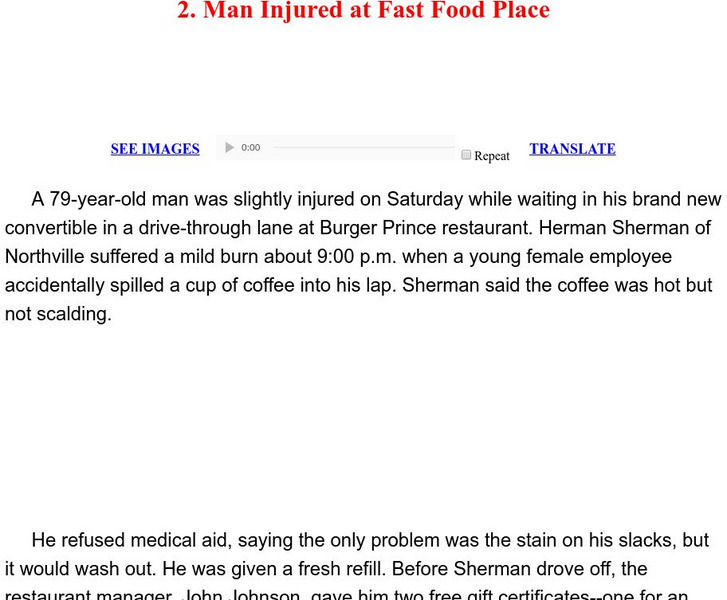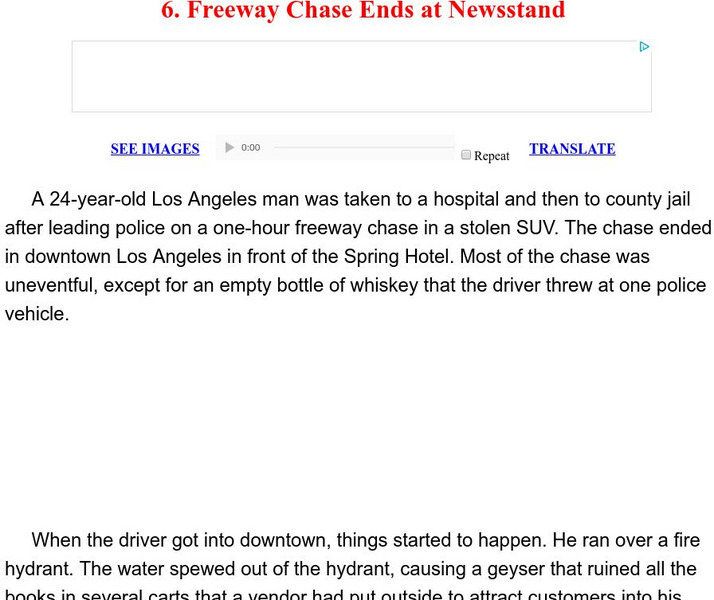Curated OER
Up in Smoke
Students use PowerPoint, Internet research, scanners and desktop publishing to create a multimedia presentation on the dangers of smoking.
Curated OER
Creating A Family Tree
Fourth graders explore their ancestral background while they experience genealogy.
Curated OER
Pythagorean Theorem Proof
Tenth graders investigate the Pythagorean Theorem. Then they type up a formal paragraph proof of a proof of their choice.
Curated OER
Waste Management
Students set up a recycling program in their school. They first estimate the kinds and amount of trash generated and brainstorm ways to reuse the recyclables and create flyers explaining how their program will work at the school.
Curated OER
Immigrants Welcome?
Ninth graders examine the world after the end of World War II. In groups, they complete a Naturalization Review Board activity and discuss how immigrants changed the United States. As a class, they discover how the immigration policies...
Curated OER
Wetland Wonders
Students describe the characteristics of wetlands. They demonstrate their understanding of the importance of wetlands to humans and wildlife and determine they are defined by the presence of water, and specialized soils.
Curated OER
Reservoir Activity
Students research the economic importance of the major reservoirs in Illinois. In groups, they manage a budget for one of the lakes to promote tourism in the area. They also work together to create advertisements.
Curated OER
Adding a Prefix to a Root Word
In this language arts worksheet, students examine 15 words followed by 3 prefix choices. Only one of the prefixes is right for the root word. Students underline the correct prefix.
Curated OER
Getting Graphs: Researching Genealogy-A Piece of Pie
Third graders research their genealogy. In this math lesson, 3rd graders collect data and create graphs and charts. A presentation of their findings is given.
Pennsylvania Department of Education
Properties Everywhere
Students examine and sort objects by specific attributes and apply prior knowledge. In this properties everywhere lesson, students work in groups to arrange objects in categories then discuss various sorting options while...
Scholastic
Scholastic: Professional Development Tutorial: Increasing Vocabulary
This tutorial is a sample lesson from a Scholastic Red session on vocabulary development.
Sophia Learning
Sophia: Vocabulary Tip: Build Associations
This screencast discusses how building associations between words increases vocabulary. It provides several examples on building successful associations using roots, parts of speech, prefixes and suffixes, and synonyms. Real Player is...
Hopelink
Hopelink: Reading Lesson Idea: Personal Vocabulary Notebook
This site has a simple but direct approach to building your vocabulary. Keeping a special notebook of new words can increase vocabulary, assist memorization, and encourage good study and organization skills. L.11-12. 6 Vocabulary
ClassFlow
Class Flow: Greek Vocabulary
[Free Registration/Login Required] This flipchart lesson contains several activities. History - students understand the chronology of Greek history and can organize events and people into major categories to explain historical...
World Food Programme
Free Rice: English Vocabulary
This vocabulary game helps students learn vocabulary and while earning free rice to feed the hungry. When they answer correctly, the next word gets more difficult and 10 grains of rice are donated to the United Nations World Food...
AdLit
Ad lit.org: Teach Vocabulary by Building Background Knowledge
Students need to develop an extensive vocabulary to read with fluency. In turn, fluency in reading leads to increased comprehension. Fluency also comes from the written language of the reader since the student writes words he or she...
AdLit
Ad lit.org: Five Areas of Instructional Improvement to Increase Academic Literacy
How can content-area, non-reading-specialist teachers contribute to academic literacy? They can incorporate these five techniques throughout their lessons: (1) provide explicit instruction and supported practice in effective...
AdLit
Ad lit.org: Adolescent Literacy: What's Technology Got to Do With It?
Learn how technology tools can support struggling students and those with learning disabilities to acquire background knowledge and vocabulary, improve their reading comprehension, and increase their motivation for learning.
Hopelink
Word Bank Lesson Plan: Eastside Literacy Program
This word bank lesson plan offers the individual student the opportunity to increase their vocabulary.
Can Teach
Can Teach: Touch and Feel Box
Students will identify objects through their sense of touch and increase vocabulary skills by using describing words. Lesson plan for K-2nd grades.
Hopelink
Hopelink: Reading Lesson Idea: Word Sorts
Delve into a world of vocabulary building. This site offers a lesson plan for "word sorts." This simple but effective tool will increase your student's vocabulary skills.
Rong-Chang ESL
Esl: English for Intermediate Learners (2): Man Injured at Fast Food Place
A learning module geared toward English as a Second Language Learners. Students read and/or listen to a short text entitled "Man Injured at Fast Food Place" and click on the links below to increase comprehension and vocabulary skills....
Rong-Chang ESL
Esl: English for Intermediate Learners (2): Freeway Chase Ends at Newsstand
A learning module geared toward English as a Second Language Learners. Students read and/or listen to a short text entitled "Freeway Chase Ends at Newsstand" and click on the links below to increase comprehension and vocabulary skills....
Rong-Chang ESL
Esl: English for Intermediate Learners (2): Better to Be Unlucky
A learning module geared toward English as a Second Language Learners. Students read and/or listen to a short text entitled "Better To Be Unlucky" and click on the links below to increase comprehension and vocabulary skills. Students can...


